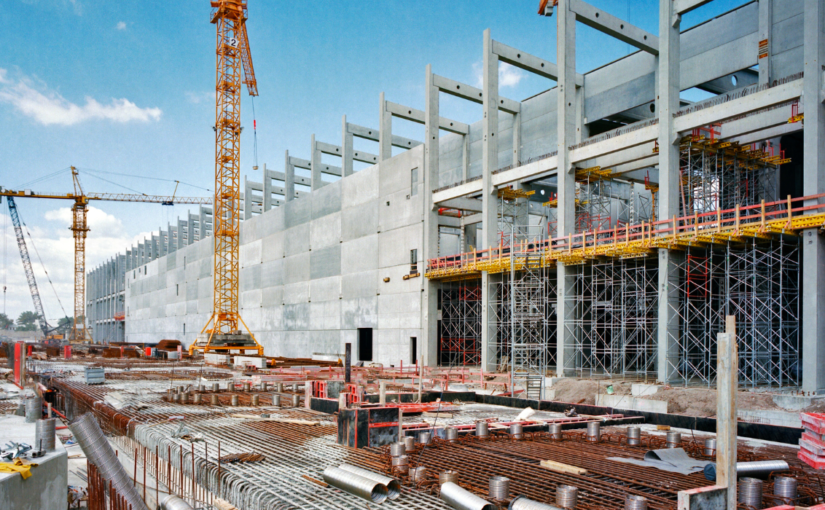back
How to refinance a construction loan into a permanent mortgage
01-2023

For commercial properties, refinancing a construction loan into a permanent mortgage can be a difficult process, but it can also be a great way to save money and strengthen the long-term financial stability of your company. This blog post will go over the procedures you must follow in order to refinance your construction loan as well as the advantages and possible disadvantages of doing so.
Step 1: Assess Your Eligibility for Refinancing
To refinance a construction loan into a permanent mortgage, the first step is to assess whether it is the best course of action for your company. There are several things to think about, such as the terms of your loan, the state of the market, and the current interest rate on your construction loan.
Refinancing might be a wise choice if the interest rate on your construction loan is significantly higher than the going rate or if the terms of your loan are unfavorable. Additionally, if your company has been around for a while and you have built a solid credit history, you might be able to get a construction loan with better terms and lower interest rates than you did initially.
Gather the necessary documentation in Step 2
Gathering the necessary paperwork is the next step after deciding that refinancing is the best course of action for your company. This typically consists of financial statements, tax returns, and other records that attest to your creditworthiness and the viability of your company’s finances.
Additionally, it’s crucial to have access to all pertinent details regarding your current construction loan, such as the loan’s terms and conditions and interest rate. With this knowledge at hand, you can compare the terms of your new loan to those of your existing loan with ease and decide whether refinancing is the best course of action for your company.
The third step is to compare lenders
The following action is to look around for lenders with your documentation in hand. You can do this online, by going to your neighborhood bank or credit union, or by collaborating with a mortgage broker.
It’s crucial to compare the terms and interest rates of various loans, as well as the fees and closing costs related to each loan, when searching for a lender. Working with a lender who has experience with commercial properties is also a good idea because they will be better able to comprehend your particular needs and assist you in locating the best loan for your company.
Step 4: Apply for a Loan and Complete the Property Transaction
Applying for the loan is the next step after you’ve found a lender with whom you feel comfortable doing business. Typically, this entails completing an application and supplying all necessary paperwork.
The lender will work with you to close on the property if your application is approved. In most cases, this entails repaying your current construction loan and obtaining a new, permanent mortgage.
Gains from Refinancing
Refinancing a construction loan into a permanent mortgage for commercial properties has a number of advantages. These consist of:
- Lower Interest Rates: One of the main advantages of refinancing is that you might be able to get interest rates that are less expensive than what you were originally offered on your construction loan. Over the course of your loan, this could result in interest savings of several thousand dollars.
- Better Loan Terms: If you refinance, you might be able to get loans with better terms than you did with your construction loan at first. This may involve extending the loan term, which could lower your monthly payments, or requiring a smaller down payment, which might make it simpler to buy a business property.
- Refinancing can also help your company’s cash flow by lowering your interest rate and/or monthly payments. This may give you more freedom to fund other aspects of your company or to set aside money for future costs.
- Tax advantages: Mortgage interest paid for businesses is tax deductible. For your company, this could mean significant tax savings.
Problems with Refinancing
Refinancing a construction loan into a permanent mortgage has a lot of advantages, but there are also some potential disadvantages. These consist of:
- Closing costs can be high when refinancing a loan and include things like title fees, appraisal fees, and other charges. These expenses can add up, which means that some of the savings you’ll get from refinancing might be offset.
- Loan Term Extension: By refinancing, you might extend the loan term, which might cause you to accrue more interest over time.
- Impact on Credit Score: If you have a lot of outstanding debt, applying for a new loan may lower your credit score.
In conclusion, converting a construction loan into a long-term mortgage for commercial properties can be a great way to reduce costs and strengthen your company’s long-term financial position. Before making a choice, it’s crucial to carefully weigh the advantages and disadvantages. You’ll be well on your way to finding the best loan for your company if you stick to the steps outlined in this blog post and work with a lender who has experience working with commercial properties.
F2H Capital Group is a debt advisory firm specializing in negotiating the best terms for your commercial real estate projects. The company offers a range of financial products and services, including fixed loans, bridge loans, and construction loans across all asset types. Please contact us for any of your financing needs.

